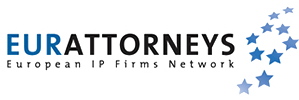On May 22, 2017, in the case of TC Heartland v. Kraft Foods Group Brands, the Supreme Court of the United States reversed the Federal Circuit and district courts’ interpretation of the general federal venue section (28 U.S.C. §1391) and the patent-specific venue section (28 U.S.C. § 1400(b)), dated 1990 (case of VE HOLDING v. Johnson Gas Appliance), by ruling that defendants can no longer be sued with patent infringement in districts they do not have strong connections to (e.g. by having a “regular and established business” in them).
The ruling is expected to have a draining effect on lawsuit filings in the ‘infamous’ jurisdiction of Eastern Texas (which typically handles patent cases of defendants with lose affiliations to it), to the extent of a 29% drop of U.S. patent suits, which will most likely be transferred to other more suited jurisdictions (such as Northern California and Delaware).
For defendants involved in current suits in Eastern Texas, this will mean opportunities to exit the district through motions of dismissal or transfer and for future plaintiffs looking to file suits in Eastern Texas, it will entail devising ways to work around the Supreme Court’s decision.
